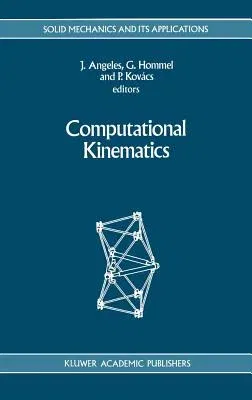The aim of this book is to provide an account of the state of the art in
Com- putational Kinematics. We understand here under this term, that
branch of kinematics research involving intensive computations not only
of the numer- ical type, but also of a symbolic nature. Research in
kinematics over the last decade has been remarkably ori- ented towards
the computational aspects of kinematics problems. In fact, this work has
been prompted by the need to answer fundamental question- s such as the
number of solutions, whether real or complex, that a given problem can
admit. Problems of this kind occur frequently in the analysis and
synthesis of kinematic chains, when finite displacements are considered.
The associated models, that are derived from kinematic relations known
as closure equations, lead to systems of nonlinear algebraic equations
in the variables or parameters sought. What we mean by algebraic
equations here is equations whereby the unknowns are numbers, as opposed
to differen- tial equations, where the unknowns are functions. The
algebraic equations at hand can take on the form of multivariate
polynomials or may involve trigonometric functions of unknown angles.
Because of the nonlinear nature of the underlying kinematic models,
purely numerical methods turn out to be too restrictive, for they
involve iterative procedures whose convergence cannot, in general, be
guaranteed. Additionally, when these methods converge, they do so to
only isolated solu- tions, and the question as to the number of
solutions to expect still remains.

